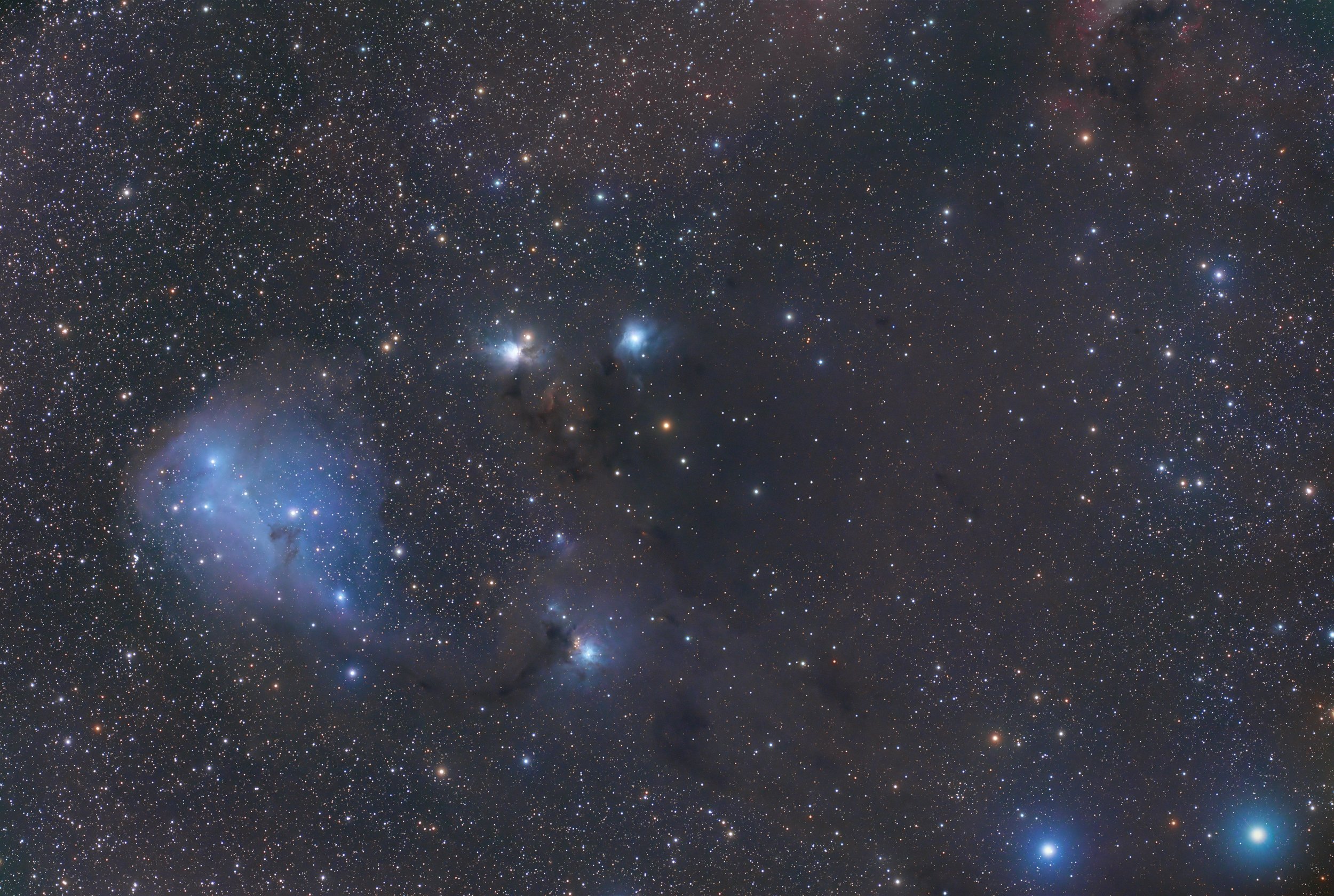
AAPOD2 Image Archives
104 hours on Andromeda at 135mm
The Andromeda Galaxy (M31), located approximately 2.5 million light-years from Earth, is the closest spiral galaxy to the Milky Way and one of the most iconic objects in the night sky. This image of Andromeda is the result of an extensive data collection process, utilizing over 100 hours of exposure time across multiple locations. The image showcases not only the galaxy’s core, but also the faint hydrogen-alpha (Ha) clouds and ionized oxygen (OIII) arc that encircle it.
Captured from two distinct locations, the first set of data was gathered from Texas, USA, at a remote observatory with dark, clear skies ideal for deep-sky imaging. The second set of data was captured from Calgary, Alberta, Canada, where urban light pollution posed additional challenges. Despite this, the combination of both data sets enabled a comprehensive view of the galaxy and its surrounding nebulosity.
Andromeda Galaxy (M31)
This image of the Andromeda Galaxy (M31) was captured from Rudka Wieś, located in the Masuria region of Poland, on August 29th and 30th, 2024. Known as one of the most iconic and closest spiral galaxies to our own Milky Way, Andromeda lies about 2.5 million light-years away. The image showcases the grandeur of M31, with its sweeping spiral arms and bright, dense core, highlighting the beauty of a galaxy that is on a collision course with the Milky Way in several billion years.
The process behind this image is a two-night effort, with RGB data being collected on the first night. A total of 100 frames were taken, each lasting 180 seconds, to capture the galaxy's visible light in red, green, and blue wavelengths. The second night focused on capturing the hydrogen signal from the galaxy’s interstellar medium, utilizing an L-Ultimate filter. This filter allowed for a clearer image of the emission nebulae within the galaxy, highlighting regions of star formation in its spiral arms. For this, 20 frames, each 600 seconds long, were acquired.
Taken under relatively dark skies in Rudka Wieś, a location that offers a good balance of dark-sky conditions, this image beautifully showcases the Andromeda Galaxy, not only in its full grandeur but also in the intricate details of its star-forming regions, making this capture a testament to both the beauty of the cosmos and the power of modern amateur astrophotography.
M31 - the kilohour project and the quest for Oiii
Image Description and Details: The kilohour project on Messier 31 stands as our most extensive effort yet, demonstrating the remarkable outcomes of collaborative work. By dedicating nearly 500 hours to Oiii observations, we've managed to bring out the arc's features with unprecedented clarity and define its structure accurately. This endeavor also allowed us to detect numerous extragalactic nebulae and resolve distinct stars within the galaxy. Opting for Sii exposures along with the usual Ha and Oiii was a beneficial choice, enhancing our findings.
In total we gathered 1056h of integration spread over LRGBHaOiiiSii
488h Oiii/314h Ha/169hSii/26h35L/17h15R/26h17G/15h37B
Equipment Details: Cams: QHYCCD QHY268 M, QHYCCD QHY600PH M, RisingCam ATR3-26000KMA, ZWO ASI2600MC Pro, ZWO ASI2600MM Pro, ZWO ASI294MM Pro, ZWO ASI6200MM Pro
Telescopes: APM Apo 107/700, Askar FRA600, Celestron C9.25 SC XLT, Celestron RASA 8”, CFF Telescopes Refractor 135mm f/6.7, Sky-Watcher Equinox 80, Sky-Watcher Esprit 100ED, Sky-Watcher Esprit 150ED, Stellarvue SVX130T, Stellarvue SVX90T, Takahashi FSQ-106EDX4, TS-Optics Photoline 140mm f/6.5, William Optics Fluorostar 120 / FLT120, William Optics Fluorostar 132 / FLT132, William Optics ZenithStar 81 / ZS81
M31 and Surrounding Features
We would like to submit the attached image as a candidate for this competition. We are a small community of astrophotographers with similar equipment who collaborate on different projects; we coined the name “Association of Widefield Astrophotographers” because of the wide field of view that our budget gear provides. The image is a 100 hour project with data from 6 different contributors. It features the famous Andromeda Galaxy, (M31) and its extensive outer halo. Our deep broadband integration also revealed faint IFN structures surrounding the galaxy. The 87 hours of narrowband data …
The countless nebulae of M31
While the Andromeda Galaxy, or M31, is celebrated as our Milky Way's nearest spiral neighbor, there are intriguing lesser-known aspects to this cosmic wonder. Recent measurements hint that Andromeda might be a bit closer than the widely quoted 2.5 million light-years, emphasizing the ever-evolving nature of our astronomical knowledge.
Andromeda's invisible halo of dark matter, its history of galactic cannibalism, and its impending collision with the Milky Way in about 4.5 billion years add layers to its mystique. Within its vast expanse lie ancient star clusters, older than their Milky Way counterparts, offering insights into the early cosmos. Beyond its beauty, M31 harbors a universe of secrets, making it an enduring subject of astronomical wonder.






